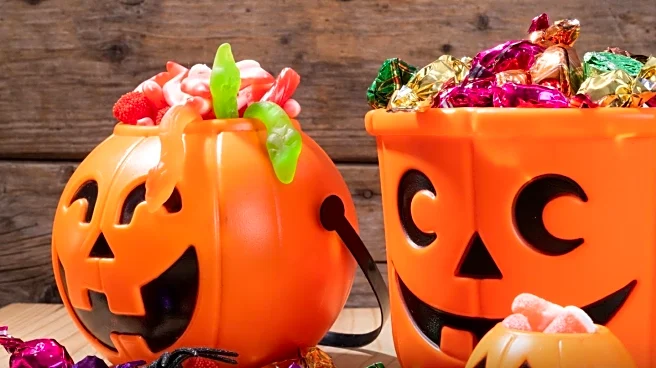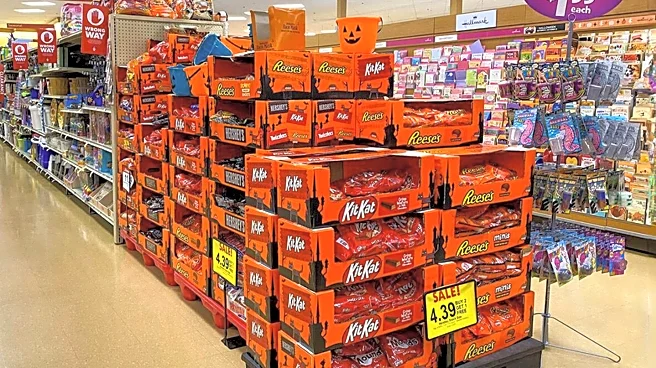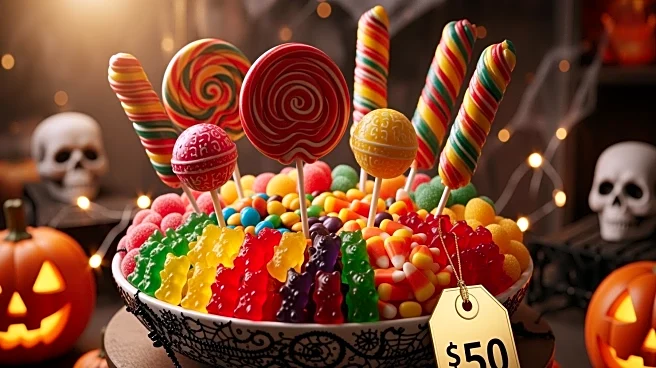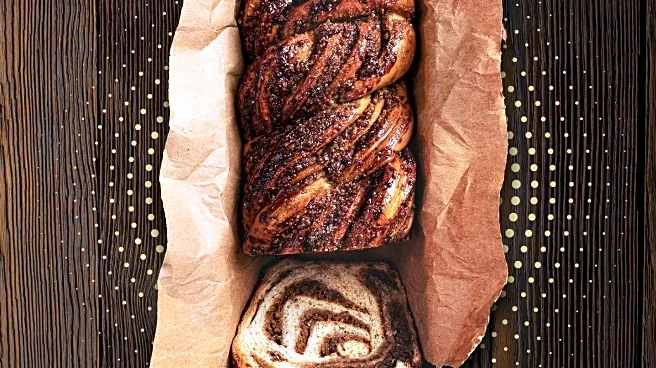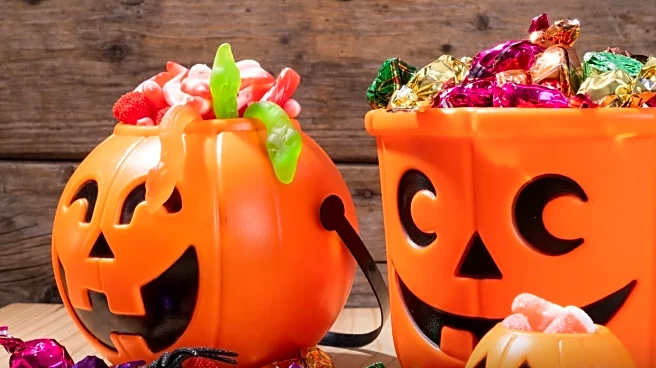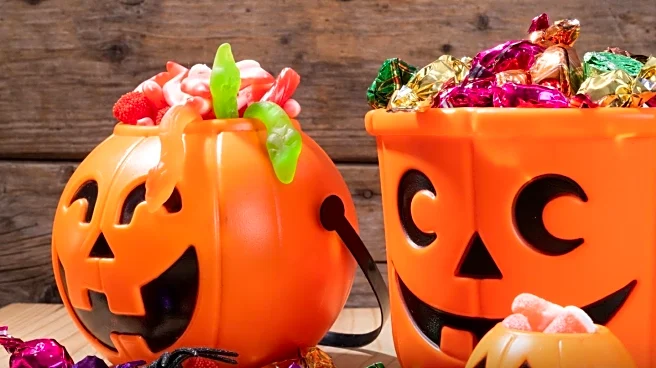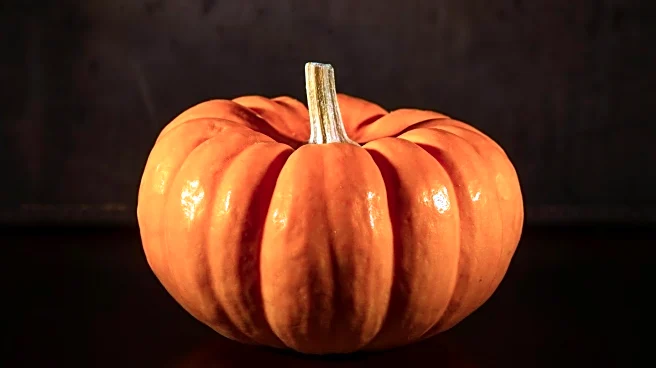What's Happening?
Halloween is the leading candy-selling holiday in the United States, surpassing other major holidays like Christmas and Valentine's Day. According to the National Retail Federation, trick-or-treaters are
expected to collect up to $3.9 billion worth of candy this year. Despite the high consumption during the holiday, many people find themselves with leftover candy and question its safety over time. Richard W. Hartel, a food science professor at the University of Wisconsin-Madison, explains that candy does expire, but not in the same way as perishable items. The expiration is typically due to physical or chemical changes rather than microbial growth, meaning old candy is unlikely to cause illness. Different types of candy have varying shelf lives, with chocolate lasting about a year if stored properly, while hard candy can last several years if protected from heat and humidity.
Why It's Important?
Understanding candy expiration is crucial for consumers who stockpile sweets during Halloween. While expired candy is generally safe to eat, its quality and taste may diminish over time. This knowledge helps consumers make informed decisions about whether to consume or discard old candy, potentially reducing waste. The insights provided by experts like Hartel can guide consumers in proper storage techniques to extend the shelf life of their candy, ensuring it remains enjoyable for longer periods. This information is particularly relevant for households with children, where candy consumption is high, and safety is a priority.
What's Next?
As Halloween approaches, consumers are likely to continue purchasing large quantities of candy. Retailers may focus on educating customers about proper storage methods to maintain candy quality. Additionally, there could be increased interest in candy packaging innovations that enhance shelf life. Consumers might also seek more information on the environmental impact of candy waste and explore sustainable disposal options. The conversation around candy expiration may lead to broader discussions on food safety and waste reduction strategies.
Beyond the Headlines
The issue of candy expiration touches on broader themes of consumer education and food waste. As awareness grows, there may be a shift towards more sustainable practices in candy production and consumption. This could include the development of eco-friendly packaging and increased emphasis on reducing food waste. The cultural significance of Halloween as a major candy holiday also highlights the intersection of tradition and modern consumer habits, prompting discussions on balancing enjoyment with responsible consumption.
